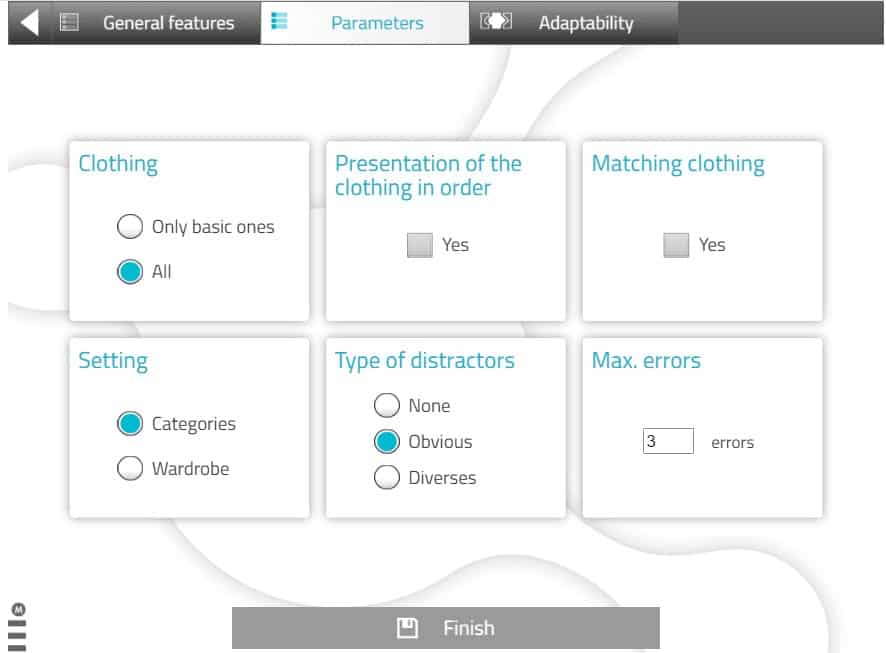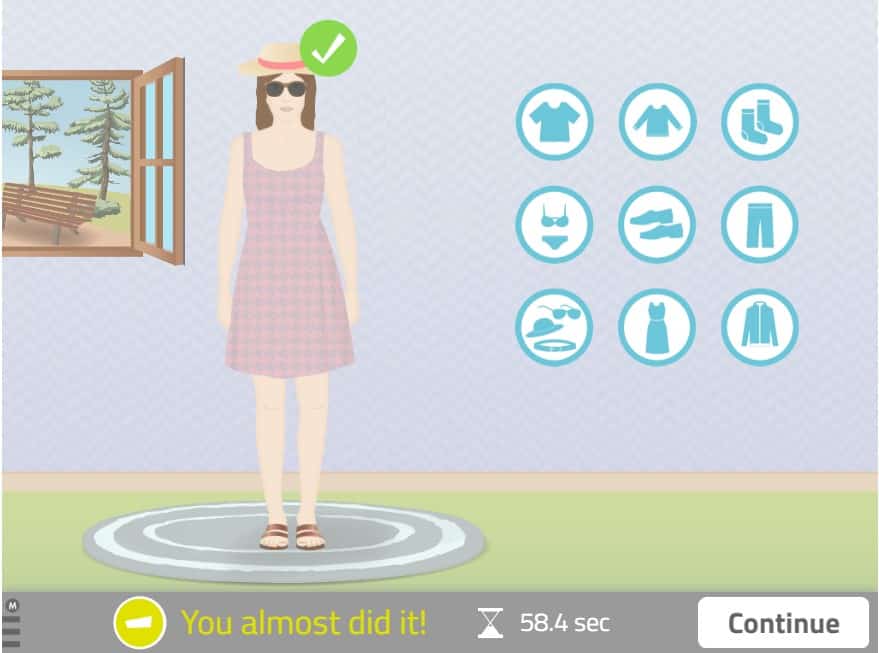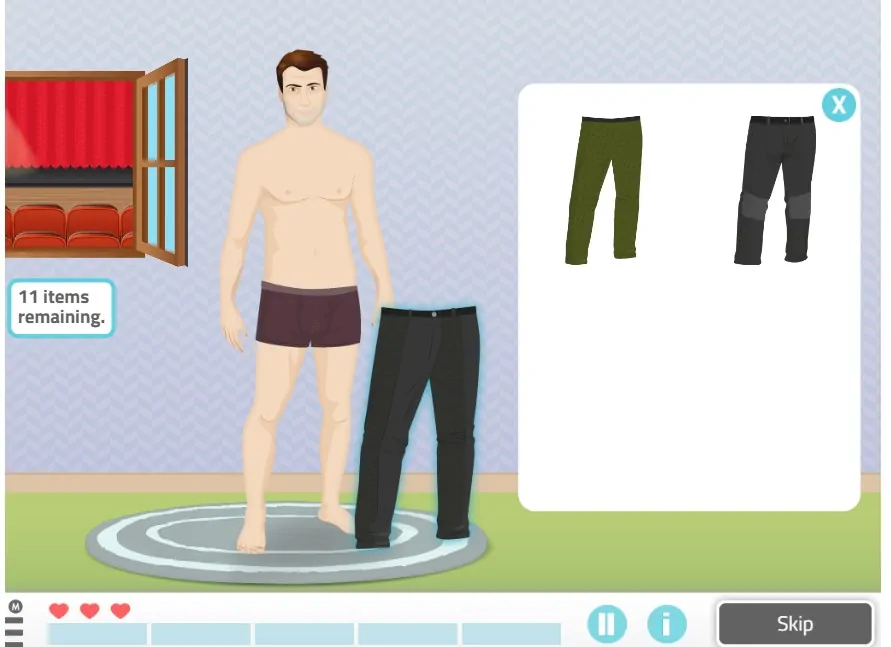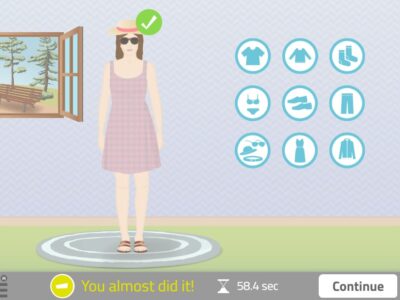According to the framework developed by the American Occupational Therapy Association (AOTA), activities of daily living (ADLs) are activities oriented toward taking care of one’s own body. ADLs also are referred to as basic activities of daily living (BADLs) and personal activities of daily living (PADLs) (1).
For certain groups of people, for example, those affected by Alzheimer‘s disease, the activity “Get dressed” is essential for improving their functional capacity and performance. Among other features, the program allows the client to follow a sequence: putting on the clothes sequentially, selecting clothing according to weather conditions, and selecting clothing appropriate to the occasion.
“Get dressed”: Upgrades
In this activity, there are two simulators: on the one hand, a male doll figure; on the other, a female doll figure. In the old version, the doll figure was randomized but now there are two different ones. As a result, the task can be better tailored to the needs of each individual and make the activity more realistic.
As in its first version, this activity includes different levels of difficulty (easy, medium, and difficult) and you can also create a personalized session where you can adjust general features such as the number of slides, the time limit, the instructions, whether or not you want the timer displayed, etc. In addition, various parameters (Figure 1) can be adjusted by selecting the number of clothing items, the scenario, the maximum number of errors, the sequential presentation of clothing, whether you want to use some type of distractor, etc. Finally, under adaptability, you can select whether you want to move the clothing items by dragging them or by just clicking on them (different options can be chosen depending on the functional capacity of the client).

As for the levels, the goal is the same: dressing the doll figure with specific clothes in a sequential fashion. On the easiest levels, there are fewer demands and more hints from the program so that the client can perform the activity correctly, while in the more difficult levels, the number of hints decreases, and the clothing demands are more complex (Figure 2).

It should also be noted that, in this new version, this is an HTML activity, which maximizes the usability. In addition, as in many other activities on the platform, you can have access to your client’s results. Another upgrade is that there are many more garments available, which means greater variation, making the activity more complex and varied (Figure 3). In the future, in addition to having adult clothes and doll figures, the new version will be aimed at older adults, with clothes more suited to their preferences and tastes.

Cognitive goals
By analyzing this activity in depth, we can confirm that the cognitive goals that can be improved, maintained and enhanced are multiple and diverse: basic cognitive functions such as attention, orientation, memory, perception, etc., in addition to higher-order cognitive functions such as praxis, planning, planning, decision-making, sequencing, etc., not to mention the basic activity of dressing. You can carry out a perfectly realistic training with this simulator in order to achieve the desired results and goals established for your client.
Conclusion
In short, this improved activity is a pragmatic and realistic resource, easy to use and with multiple settings. Depending on the client’s condition, it is very useful for the rehabilitation and training of this basic activity of daily living (dressing).

 Social Cognition or Understanding Others: Social Cognition Activities
Social Cognition or Understanding Others: Social Cognition Activities
Leave a Reply